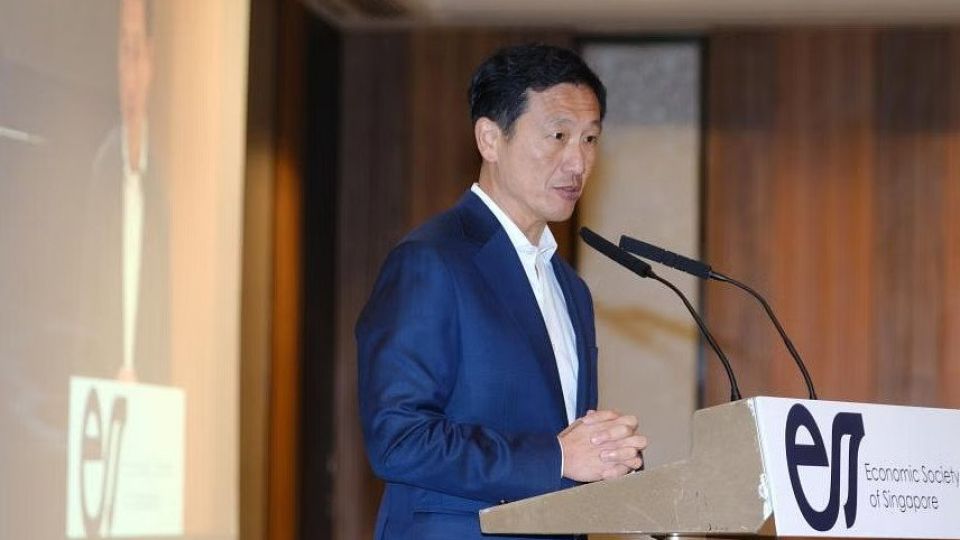November 1, 2023
SINGAPORE – The Healthier SG plan, which helps people here lead healthier lives, is Singapore’s best bet to keep healthcare affordable, of high quality and accessible as it tries to manage a healthcare system weighed down by a rapidly ageing population.
Health Minister Ong Ye Kung said this at the 15th Singapore Economic Policy Forum, which was held at the Voco Orchard hotel on Tuesday.
The 2023 event was organised by the Economic Society of Singapore, in partnership with Nanyang Technological University.
Mr Ong said that preventive care programme Healthier SG, which is funded to the tune of $400 million a year, may not be enough for the country to achieve an elevated Blue Zone 3.0 status, where the gap between lifespan and health span narrows.
It is a term he recently coined after Singapore was added to the list of Blue Zones – geographical locations with the highest life expectancy across the globe.
“We are thinking of other ways, such as differentiating insurance premiums between those with and without appropriate lifestyles. We are considering regulatory measures to reduce the consumption of sodium,” Mr Ong said.
Singapore is also investing in another national programme, called Age Well SG, to help seniors build social circles and live an active lifestyle in the community in order to fight loneliness.
“We hope to delay and avoid institutionalisation of as many seniors as possible. Living in a nursing home, their health deteriorates,” he said.
Health economics is an area where the Ministry of Health (MOH) wants to see more economists devote time, whether it is about allocating healthcare supply and demand, resolving problems between payers, providers and patients, or using behavioural economics to nudge people to adopt healthier lifestyles, said Mr Ong.
To that end, he said MOH is thinking of setting up a health economics office.
In discussing the key economic principles of healthcare, Mr Ong said one of the main things is to rely on different ways to support healthcare, including government subsidies, insurance and even philanthropy.
Another is to not make an enemy of medical technology. Technological advances such as digital healthcare are helping people practise preventive and holistic care in an easy and cost-effective way, he added.
There are also new drugs and treatments that can be beneficial to some patients with certain diseases, but at a very high price.
Subsidising these treatments carries a significant opportunity cost, because the money can be spent elsewhere – in education, public transport, parks, or defence, said Mr Ong.
Singapore’s average lifespan and health span are among the highest in the world.
Yet, it has spent slightly less than 5 per cent of its gross domestic product each year on healthcare, less than half of what other developed countries spend on average, Mr Ong said.
However, the healthcare system needs to adapt to new realities, he added.
Healthcare costs need to be borne by society as a whole, and how this is done impacts the performance of the healthcare system.
In his speech, Mr Ong gave two examples of how healthcare is primarily funded in Britain and the United States.
Britain decided to adopt a single-payer model, where the government uses tax revenues to pay for healthcare and patients do not have to pay at the point of care.
Socially, this is very just and equitable, but there are significant downsides, Mr Ong said.
The system is under a lot of stress, especially after the Covid-19 pandemic, he said. There are seven million British patients waiting for treatment, and healthcare workers are feeling the strain.
Government healthcare expenditure in Britain is rising and needs to compete with other pressing demands on public spending.
In the US, however, private insurance is a major feature of healthcare financing.
Insurance, being self-financed through premiums, is more sustainable. There is less competition with other public spending such as for education and defence.
Insurance also offers choice to the consumer, who can opt to pay more for better coverage.
However, in any country, there are rich people who can afford a lot, and those who cannot afford anything at all.
Thus, those who cannot afford insurance premiums can be denied healthcare services, while the rich enjoy five-star service.
“Whatever the starting point, most countries ended up with a mixed funding system,” Mr Ong said.
While no British government will move away from the principle of free healthcare, there is private insurance available, so those who can afford it can skip the waiting lines and get prompt treatment in a private hospital.
In the US, the Obama administration pushed for the Affordable Care Act. Today, it is no longer that reliant on insurance as about half of the nation’s healthcare expenditure comes from the government.
Singapore has always recognised the pros and cons of subsidies and insurance in socialising healthcare costs, and decided to use both to pay for healthcare, Mr Ong said.
It also added a third component of personal responsibility and co-payment through mandatory savings to establish the S+2M (subsidies, MediSave and MediShield Life) framework.


